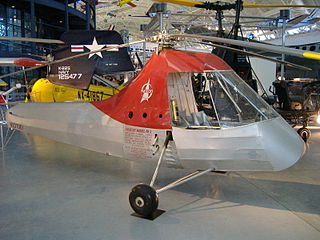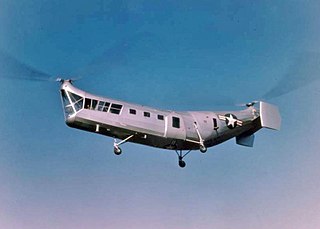
Frank Kozloski (1916–2003) was an aeronautical engineer who worked on early tandem rotor helicopters and was one of the founders of Piasecki Helicopter's.
Piasecki Helicopter Corporation was a designer and manufacturer of helicopters located in Philadelphia and nearby Morton, Pennsylvania, in the late 1940s and the 1950s. Its founder, Frank Piasecki, was ousted from the company in 1956 and started a new company, Piasecki Aircraft. Piasecki Helicopter was renamed Vertol Corporation in early 1956. Vertol was acquired by Boeing in 1960 and renamed Boeing Vertol.
Kozloski was born in Edwardsville in 1916. His parents were Anthony and Stella Twardowska Kozloski. After graduating from Penn State University,Kozloski worked for Westinghouse in Sharon for a year. He left Westinghouse to study aeronautical engineering at NYU. On graduating in 1940, Kozloski joined Frank Piasecki, F.M.Vinsie, Walt Schwartz, Don Myers, and Elliott Daland who formed their own company where they designed the Piasecki PV-2. He met Drago Jovanovich while working at Piasecki's.

Frank Piasecki was an American engineer and helicopter aviation pioneer. Piasecki pioneered tandem rotor helicopter designs and created the compound helicopter concept of vectored thrust using a ducted propeller.

The Piasecki PV-2 was a helicopter designed by Frank Piasecki. The PV-2 is best known for being the second successful helicopter flown in the United States. The PV-2 first flew on April 11, 1943. Developed as a technology demonstrator, the PV-2 brought several new features such as the first dynamically balanced rotor blades, a rigid tail rotor with a tension-torsion pitch change system, and a full cyclic and collective rotor pitch control.

D. K. or "Gish" Jovanovich was a Serbian-American helicopter designer, inventor, and pioneer in autogyro technology.
On 26 September 1944 he married Bertha S. Anisko and later worked for Kellett Autogiro Corporation in Philadelphia until being drafted into the Navy. After the war he joined with Jovanovich in forming HERC and moved with him to McCulloch's for a time. In the mid-1950s Kozloski opened his own machine shop in California and worked for a number of years for the Hughes Aircraft Corporation. He was involved through Hughes with development of the F-102 and XF-103 fighter planes.

The Kellett Autogiro Corporation was an American aircraft manufacturer from 1929 based in Philadelphia, named after founder W. Wallace Kellett.

The Republic XF-103 was an American project to develop a powerful missile-armed interceptor aircraft capable of destroying Soviet bombers while flying at speeds as high as Mach 3. Despite a prolonged development, it never progressed past the mockup stage.
In the late 1950s Kozloski returned to Pennsylvania and worked for Boeing as a technical representative for the Bomarc Missile Program. He moved again in 1964 to Alabama to work on the Apollo 11 project and then to Delaware to work on the Sea Knight helicopter. Kozloski retired from Boeing in 1981 due to ill health and moved to Maine. He died on 15 December 2003. [1]

The Boeing Company is an American multinational corporation that designs, manufactures, and sells airplanes, rotorcraft, rockets, satellites, and missiles worldwide. The company also provides leasing and product support services. Boeing is among the largest global aircraft manufacturers; it is the fifth-largest defense contractor in the world based on 2017 revenue, and is the largest exporter in the United States by dollar value. Boeing stock is included in the Dow Jones Industrial Average.

Apollo 11 was the spaceflight that landed the first two people on the Moon. Commander Neil Armstrong and lunar module pilot Buzz Aldrin, both American, landed the Apollo Lunar Module Eagle on July 20, 1969, at 20:17 UTC. Armstrong became the first person to step onto the lunar surface six hours later on July 21 at 02:56:15 UTC; Aldrin joined him 19 minutes later. They spent about two and a quarter hours together outside the spacecraft, and collected 47.5 pounds (21.5 kg) of lunar material to bring back to Earth. Command module pilot Michael Collins flew the command module Columbia alone in lunar orbit while they were on the Moon's surface. Armstrong and Aldrin spent 21.5 hours on the lunar surface before rejoining Columbia in lunar orbit.








